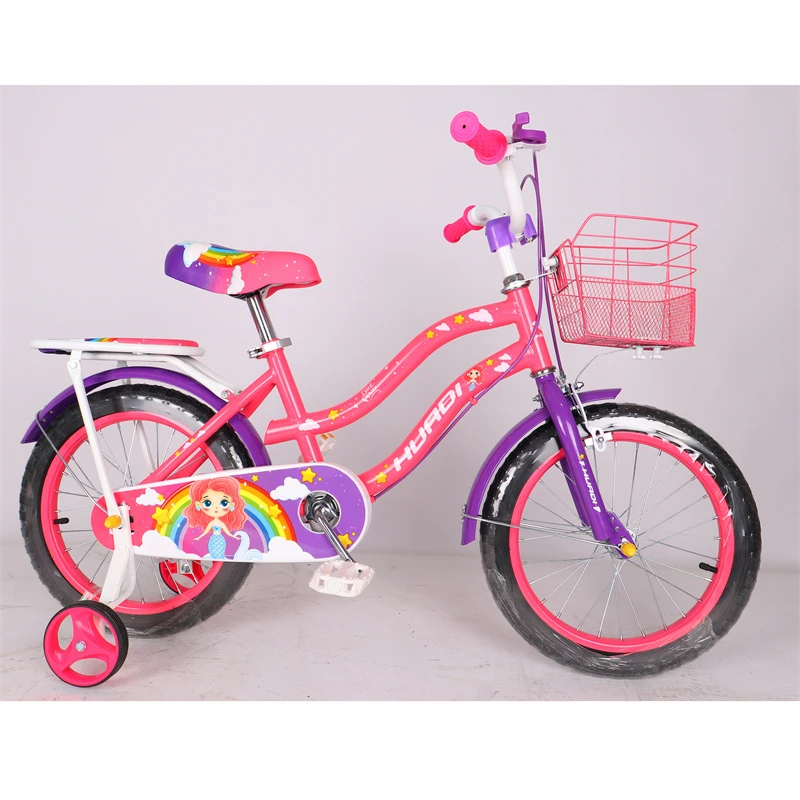childrens bikes age 4-6
Choosing the Right Bike for Children Aged 4-6
Finding the perfect bike for your child can be an exciting but daunting task, especially for children aged 4 to 6 years. At this age, children are developing their motor skills and gaining confidence in their abilities. Therefore, selecting a bike that suits their developmental stage is crucial for both safety and enjoyment. This article aims to guide you through the important elements of choosing a bike for 4 to 6-year-olds, including size, type, safety features, and tips for teaching your child how to ride.
Bike Size and Fit
One of the most important factors when choosing a bike for your child is ensuring the right size and fit. At 4 to 6 years old, most children need bikes with wheel sizes between 12 to 16 inches. The best way to determine the appropriate size is to have your child stand over the bike frame. There should be a clearance of about 1-2 inches between the child and the top tube of the frame. When seated, your child should be able to touch the ground with both feet while keeping their knees slightly bent.
Additionally, consider the weight of the bike. A bike that is too heavy can be difficult for a young child to handle. Look for lightweight materials, such as aluminum, which can provide both durability and ease of use.
Types of Bikes
There are several types of bikes suitable for children aged 4 to 6
1. Balance Bikes These bikes do not have pedals and are designed to help children learn balance and coordination. They push themselves along using their feet, which builds confidence and prepares them for riding a traditional bike in the future. Balance bikes are great for beginners as they remove the complexities of pedaling initially.
2. Training Wheel Bikes These bicycles come with training wheels that provide extra stability as children learn to pedal. Once they have mastered riding with the training wheels, they can be removed to allow for a more traditional cycling experience.
3. Pedal Bikes For those who are confident enough to ride without training wheels, a pedal bike is a great option. Ensure that the bike has a low step-through frame to allow for easy mounting and dismounting.
Safety Features
Safety should be your top priority when selecting a bike. Look for features such as
childrens bikes age 4-6

- Brakes Ensure that the bike has reliable brakes that are easy for small hands to operate. Hand brakes may be suitable for older kids, while coaster brakes (where pedaling backwards stops the bike) can be safer and more intuitive for younger children.
- Reflectors and Lights Make sure the bike has reflectors on the front, rear, and wheels to enhance visibility in low light conditions. If your child will be riding in the evening, consider purchasing additional lights that can be attached to the bike.
- Helmet Always ensure your child wears a properly fitting helmet when riding. This is essential for protecting their head in case of falls or accidents.
Teaching Your Child to Ride
Once you have chosen the right bike, you can begin the exciting journey of teaching your child how to ride. Here are some tips to make the process smooth and enjoyable
1. Choose a Safe Location Start in a flat, open area with a soft surface, like grass, to minimize the risk of injury during falls.
2. Encourage Balance First If using a balance bike, allow your child to get comfortable with balancing before introducing pedaling. If using training wheels, ensure they don’t prevent the child from truly learning balance.
3. Be Patient and Supportive It’s normal for children to feel apprehensive about learning to ride. Offer plenty of encouragement and celebrate small milestones to keep their spirits high.
4. Practice Stopping Teach your child how to stop safely by applying the brakes gently. Practicing this skill will help them feel more confident and in control.
5. Progress Gradually Once your child has mastered balance and pedaling with training wheels, slowly transition to removing them to experience riding independently.
In conclusion, the right bike can greatly enhance the cycling experience for your child aged 4 to 6. By focusing on size, type, safety features, and employing proper teaching techniques, you’ll ensure that your child not only learns to ride but also loves cycling. Enjoy the journey as you watch your child gain confidence and joy in riding their bike!
-
The Perfect Baby TricycleNewsAug.11,2025
-
Ride into Fun with Bikes for KidsNewsAug.11,2025
-
Ride into Adventure with the Perfect Kids Balance BikeNewsAug.11,2025
-
Fun and Safe Riding with the Best Childrens ScootersNewsAug.11,2025
-
Find the Perfect Childrens Bike for Your Little OneNewsAug.11,2025
-
Explore the Best Baby Tricycles for Your Little OneNewsAug.11,2025
-
Three-Wheel Light-Up Scooter Benefits for KidsNewsJul.11,2025








